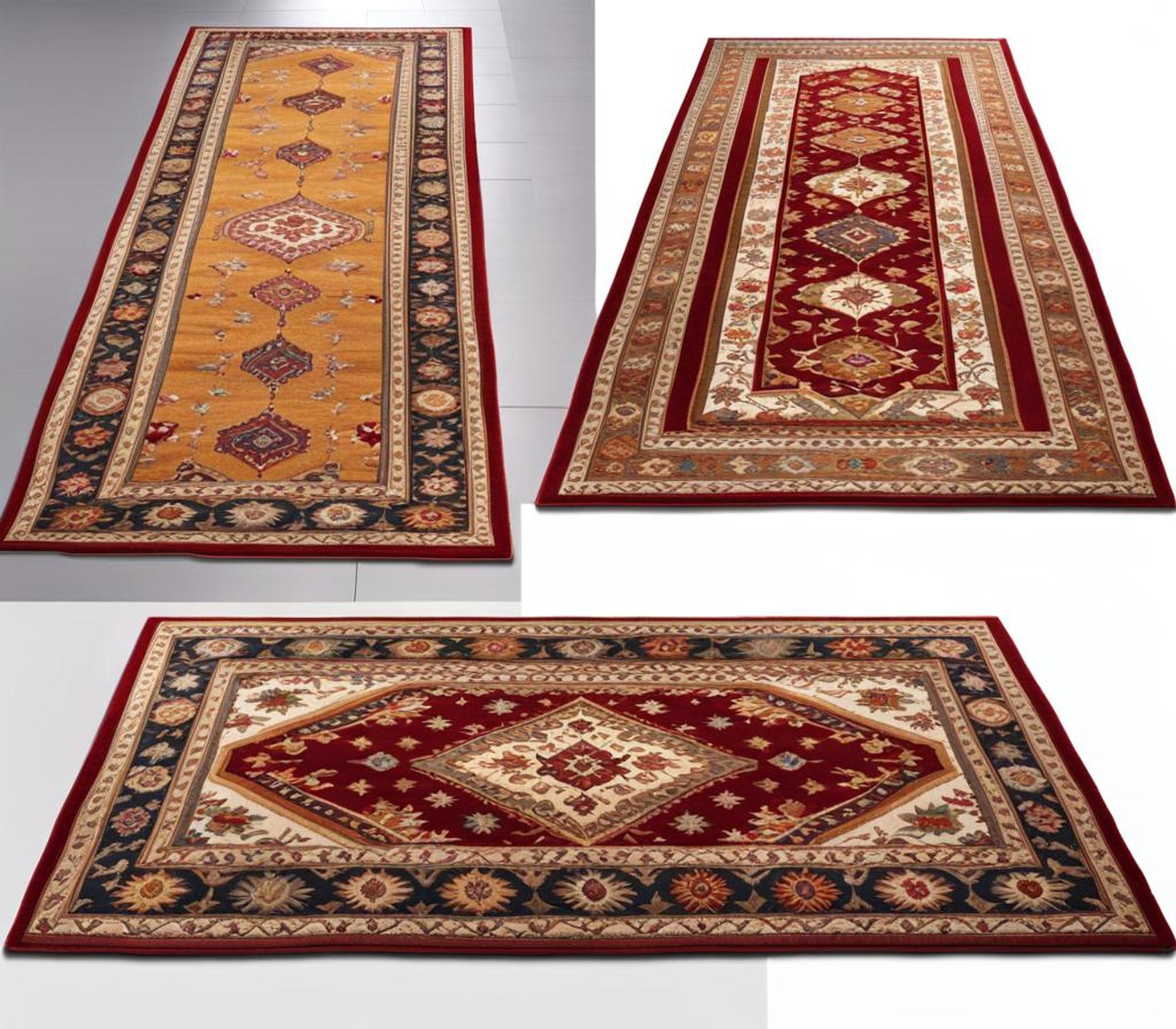When it comes to bedroom decor, most people tend to stick with traditional rectangular area rugs beside the bed or spanning most of the floor. But runner rugs offer a versatile, affordable, and low-maintenance alternative for adding both style and function.
With their elongated shape, runners can be incorporated creatively throughout the bedroom–not just in the entryway or hallway. Take a fresh look at how incorporating runners can define spaces, amp up coziness, anchor layouts, and seriously elevate your bedroom decor.
Defining Separate Zones in Open Floor Plans
For spacious master bedrooms or lofts, use perpendicular runner rugs to designate different activity zones without major renovations:
- Place one horizontally under your vanity or clothing rack to create a dedicated getting ready station.
- Position another vertically in a corner, top it with pillows and you’ve instantly achieved a cozy reading nook.
- Install a narrow runner vertically between seating areas to form an entry “foyer.”
- Cordon off an empty area beside windows to make a yoga and meditation zone.
Carve Out Special Spots for Reading or Lounging
Runners parallel along walls or fences make planning separate activity pockets in any bedroom a breeze. Use one to distinguish a lounging spot from the main sleeping area–no construction required. The linear shape enables you to quickly make new spaces feel polished and purposeful.
Section Off Private Nooks or Dressing Rooms
In a large master, position two identical runners perpendicular to walls to create a narrow walkway. Flank with curtains for an instant dressing room. Arrange the rest of your furniture around this new “closet” zone.
Warm Up Your Bedroom Floors Underfoot
While wall-to-wall carpeting provides cushioning for the whole bedroom floor, small runner rugs add concentrated comfort and warmth for your feet.

Wool runners or other natural-fiber options give a soft, insulated surface for bare soles during chilly mornings.
Look for medium to thick pile runners in sensitive spots like beside your bed or in front of a vanity seated area.
- First thing, you’ll appreciate standing on a plush surface after getting out from under the covers.
- A thick rug also absorbs the impact from repeated standing, making it kinder on knee and joint pain.
Cozy Up the Entry Points to Your Bedroom
New residents or guests will feel right at home entering your bedroom atop a cushy runner.
Extend from the main doorway all the way to the edge of your bed if space allows for a dreamy superhighway skirting.
This provides a welcoming accent piece with all the comfort underfoot you’d expect in a well-appointed master.
Creative Layouts to Anchor Your Bedroom Pieces
In Feng Shui and design best practice, anchoring pieces of furniture is key for a harmonious energy flow. Runner rugs are ideal to center, connect, or ground the main items in your sleeping quarters–without sprawling across the whole square footage.
Unify Bed With Nearby Chair or Ottoman
Tie your sleeping area to a sitting space with a runway runner. Having an area to perch while getting dressed or putting on shoes makes coming and going more convenient.
Plus, visually connecting your furniture groupings with a runner streamlines the layout–and your morning routine.
Build Vignettes Around Bench Seating
Work a rectangular rug around built-in or standalone benches for balanced appeal and to protect your legs from hard flooring.
Flank the entire seat with an identically shaped runner on both sides, or just provide a cushioned area underneath.
Anchor your room’s scheme with creamy neutrals like oatmeal or gray. Or make a statement with lively jewel tones or vibrant geometric patterns.
Choosing Stylish yet Low-Maintenance Runners
Unlike large wool rugs prone to heavy matting and stains, most runner constructions lend themselves to convenient cleaning for carefree use in high-traffic spots.
Cotton, jute, or basic polypropylene are all fairly affordable runner materials with natural stain resistance. When soiled, just remove and pop in the washing machine periodically.
For instant coziness at a fraction of the cost, use cut-to-fit runners atop wall to wall carpeting already installed.
The smaller proportions also make regular vacuuming, spot cleaning, and replacing your runners less of a chore down the line.
Tips for Picking the Perfect Size and Shape Runner
Measure the main dimensions of your bedroom and any doorways or tight passageways you’ll be transporting them through.
Take into account the specific furniture pieces or expanses you hope to anchor down too.
Standard runners meant for halls tend to be relatively narrow at 2 to 3 feet across. Opt for wider versions up to 5 feet where possible to make more of an impact layered atop carpets.
Custom-cut rug companies allow you to dictate atypical sizes and outlines for a tailored solution.
Expert Styling Suggestions
When it comes to placing and designing around your new runners, it’s all about strategy:
- First, use a tape measure and arrange your main seating or beds where desired.
- Then determine ideal rug dimensions to anchor the existing layout.
- Pick neutral foundation colors like beige that allow bolder bedding or art to shine.
- For limited square footage, play with varied lengths rather than wide expanses of rug.
- In a small space, tone-on-tone rug and wall-to-wall carpeting avoid clutter.
- Up the interest even more by layering a flatwoven rug atop a plushier runner base.
By centering layouts, adding cushioned comfort, designating activity pockets, and offering carefree cleaning, runner rugs unlock bedroom decor potential beyond the basic “rug-under-bed” idea.
Dare to reimagine traditional runner placements in halls and entryways. Then customize dimensions and styles to amplify coziness, warmth, and personality in your master suite or sleeping quarters.
